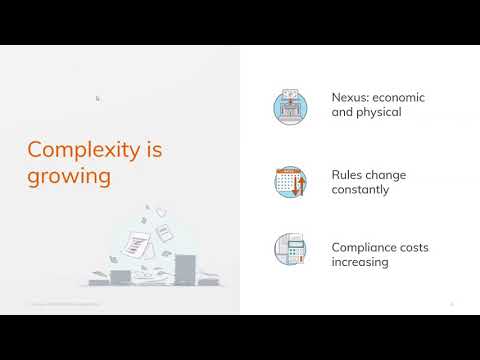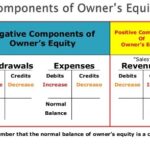
Not all banks offer interest-bearing checking accounts, and those that do may have minimum balance requirements (which could be quite high). Ready to reclaim control of your finances and free up valuable time to focus on growing your business? Many bookkeeping services can offer expert assistance to get your finances in order and keep them that way.
Reconcile your bank statement
If collecting payments from customers is difficult, consider offering them a payment plan. Plus, it shows customers that you understand their situation and care about irs says business meals are tax deductible their needs. Track the condition of these assets and record any expenses related to them. Of course, you should account for purchases when you review fixed assets too.
- The process of recording transactions includes logging and verifying the money going in and out of the door, as seen in the general ledger.
- If the taxation authority finds an error with your tax return form, it might reject it and charge interest and penalties after thorough auditing.
- To do this, check all the transactions on your statement against your entries to ensure everything matches, that you haven’t left anything out, and that there aren’t any math errors.
Maintain a record of transactions
If you’re fighting for time, aim to catch up with your reconciliation ahead of the month end close process. With account reconciliations, you’ll spot mistakes in your financial data and fraudulent transactions (if any!). If you’re not recording your expenses in real-time, attempt to record them weekly. If you fall behind, catch up on your backlog ahead of the month end process. If you do not do this, your staff may lose sales by telling customers you are out of stock when an item just hasn’t been entered into the system. Also, if your staff sells out of an item, reordering may be delayed if your system is not set up to allow negative inventory counts.

Step 9 – Review
The month end close process involves recording, reconciling, and reviewing all business transactions and finalizing the account data for the month. Reconciliation of all your cash business transaction entries need to be accurate so that you always know how much cash liquidity you have available on a monthly basis. This will make it easier to correct errors or find omissions which can then be looked into and corrected. Prior to year-end, review both your accounts receivable and accounts payable to ensure you settle all collections and debts.
In any type of trust account, a trustee controls the account assets for the benefit of another person or group. The trustee is often a family member, attorney, or accountant who has accepted responsibility for managing the account. In general, premium accounts require a higher balance than standard accounts in order to have the monthly fee waived. For instance, with Chase Premier Plus Checking, you’ll need an average beginning day balance of $15,000 in deposits with Chase, or you’ll pay a $25 monthly fee. Unassigned transactions can create a murky financial picture and hinder tax preparation. Review and categorize all income and expenses into appropriate categories.
Review your inventory
With an interest-bearing checking account or high-yield checking account, you earn interest on the money in the account—just as you would in a savings account. Unlike a savings account, however, you’ll be able to write checks and use your debit card to make purchases and pay bills. If your balance sheet doesn’t balance, investigate potential issues like incorrect account closures, misplaced inventory entries, or the need for file verification and repair.
Simplify this process by giving them a foundation to stay organized through the information-sharing stage. You can include a questionnaire in your welcome email, providing them with a checklist. A signed contract is the first document required for your working relationship to begin. The contract should include details on the scope of your arrangement, and a complete, signed copy should live in your client file, ready to reference if needed. As you welcome a new client and conduct the onboarding process, you might find different documentation requirements for each client type.
It will help you check whether you have filed all the necessary documents according to the form’s requirements and correct the last-minute errors. Regardless of what industry you are operating in, it’s crucial for all companies, small or big, to adhere to the state laws regulating the sales tax. In such a case, it’s advisable to practice continuous bookkeeping for ecommerce while reviewing the inventory levels. You might have an outstanding bill from your vendor that you need to check to make payment on the due date and update the outstanding amount. Keeping a check on unpaid bills from vendors can help you avail of the maximum discounts.
Account reconciliations help you spot mistakes in your financial reporting. You can also check your account statements for evidence of fraudulent transactions. It’s also worth checking your income statement accounts to ensure you’ve invoiced all of your customers for the month.
Or maybe your accountancy department is already top-notch and requires zero improvements? In which case, check out these other template packs to help your other departments and business processes. This checklist points you to all the different factors you need to take into consideration when compiling your business tax return. It’s geared toward US companies but has a broad enough scope to assist businesses internationally. It’s geared to work for companies with both partnership and corporation structures. This helps you work out your gross profit, your profit before taxes, your retained earnings, and other important terms any good accounting overview of your business will need to represent.
This is a great option for busy business owners who want to streamline their bookkeeping. Regular backups are essential for safeguarding your financial information and ensuring disaster recovery in case of unforeseen events. Backups create copies of your closing costs explained data, allowing you to restore your bookkeeping system to a previous state if disaster strikes. Imagine a power outage corrupting your bookkeeping software, a hardware malfunction erasing your files, or even a cyberattack compromising your system.

Just as you reconcile your personal checking account, you need to know that your cash business transaction entries are accurate and that you are working with the correct cash position. Record each transaction (billing customers, receiving cash from customers, paying vendors, etc.) daily or weekly, depending on volume. Although recording transactions manually or in a digital spreadsheet is acceptable, it is probably easier to use a small business accounting software like QuickBooks. Reconciling your cash makes it easier to discover and correct any errors or omissions — either by you or by the bank — in time to correct them. Record each transaction (billing customers, receiving cash from customers, paying suppliers, etc.) daily or weekly, depending on volume. Although recording transactions manually or in Microsoft Excel sheets is acceptable, it is probably easier to use small business accounting software like QuickBooks.
In addition, the Accounting Checklist can help track and analyze important data regarding expenditure, investments, and determine an ideal manner for reporting revenue growth. Unfortunately, even though most big companies have a dedicated accounting team to take care of these processes, it is the small businesses which find accounting and finance a challenge. Ultimately, the goal of your finance and accounting teams is to create accurate financial statements for the month. To ensure that happens, your accounting department and finance team need to work together to create a month end close process. Following a well-prepared checklist will help you complete all your financial tasks efficiently and timely, leading to seamless accounting and bookkeeping for ecommerce businesses. The IRS requires most small business owners to make quarterly tax estimate payments if they expect to owe more than $1,000 at year-end.
Some bills may be on auto-pay, but you should still verify these transactions went through and that the payment method hasn’t expired. Your clients may receive vendor invoices electronically or by mail, so be thorough to prevent missing a payment deadline. Daily cash reconciliations create a paper trail and work as a control for the business. You can immediately tell if cash is missing and only need to investigate the past 24 hours if anything is off.
Running review reports serves as a critical checkpoint in your month-end close and year-end close process. Consider implementing data visualization tools or dashboards to make it easier to spot trends and anomalies in your financial information in real-time. By proactively investigating and addressing any unexpected clarence heller changes, you can enhance the accuracy of your financial statements and improve your organization’s decision-making abilities. Correctly posting closing entries in the general ledger ensures your financial statements provide an accurate snapshot of your organization’s financial position at the end of the month.
By checking regularly (and comparing to prior months’ numbers), it’s easier to make adjustments so you are neither short nor overloaded. Forecasting how much cash you will need in the coming weeks/months will help you reserve enough money to pay bills, including your employees and suppliers. The following checklist lays out a recommended timeline to take care of the accounting functions that will keep you attuned to the state of your business and streamline your tax preparation. Read through for in-depth coverage of your required tasks, or skip to the end to see a handy infographic to use as a visual checklist.
If you overstock, you’ll trap money unnecessarily in inventory and risk wastage. Likewise, if you understock, you’ll risk production losses, missed revenue, and reputational damage. If you need more time to pay your suppliers, negotiate better credit terms in advance. Next, review if you’ve invoiced all your customers accurately and send any missing invoices. Here’s our month-end close checklist to help you organize your workflows.
